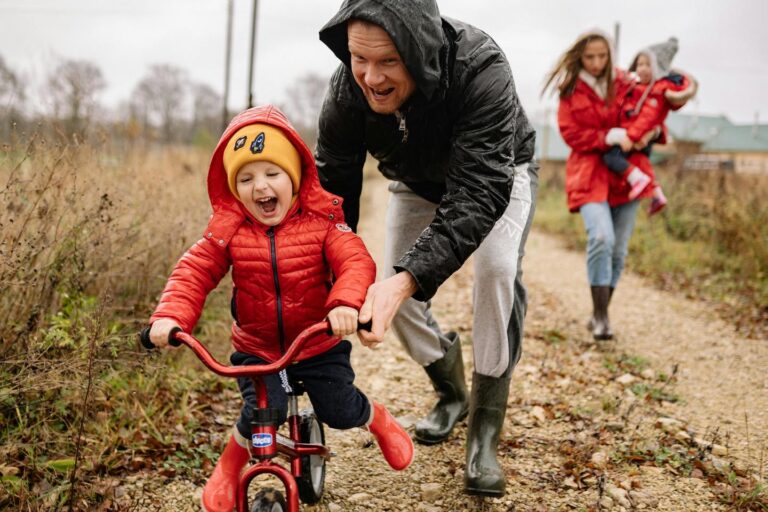Family Involvement in Residential Mental Health Support
Imagine a symphony of sounds, where each element contributes to the exquisite harmony. In this melody of life, families often play the lead instruments when it comes to Family Involvement in Residential Mental Health Support.
But how do they manage this challenging score? Can their tune alleviate mental health distress and guide towards recovery?
In our journey today, we will traverse through different notes – from understanding family roles in mental health care to discussing ways for effective engagement.
We’ll also face some discordant moments as we explore barriers that can disrupt these harmonies and strategies to fine-tune them again.
Sit tight! This is not just about learning new facts but embracing perspectives that might change your outlook on residential mental health support. Are you ready for an enlightening encore?
Table of Contents:
- The Integral Role of Families in Promoting Mental Health and Managing Mental Illness
- Strategies for Engaging and Supporting Families in Residential Mental Health Support
- Benefits and Challenges of Family Involvement in Residential Mental Health Support
- Overcoming Barriers to Family Involvement in Residential Mental Health Support
- Case Studies Highlighting Successful Family Involvement in Residential Mental Health Support
- The Impact of Family Involvement on Treatment Outcomes in Residential Mental Health Support
- Future Directions for Family Involvement in Residential Mental Health Support
- FAQs in Relation to Family involvement in Residential Mental Health Support
- How do family members play a role in caring for our mental health?
- What role does one’s family play in supporting a person struggling with mental health issues?
- How can parents and family help someone experiencing a mental health challenge?
- Why is it important to involve the family in the treatment plan?
- Conclusion
The Integral Role of Families in Promoting Mental Health and Managing Mental Illness
Family involvement is essential for promoting mental health, and engagement in the journey towards wellness is a priority of the National Building Bridges Initiative. They’re not just visitors at therapy sessions; they are primary caregivers, allies in the journey towards wellness.
National Building Bridges Initiative draws a line between family involvement and engagement. While both terms seem interchangeable, there’s more than meets the eye.
Family Involvement vs Family Engagement
Involvement suggests participation on an as-needed basis – like attending meetings or residential treatment events when asked. But engagement means being part of the decision-making process: actively collaborating with professionals to craft care plans that cater to unique needs.
This is where we can change how we approach mental illness and help-seeking behavior. With approximately 21% of Americans suffering from a mental illness according to NAMI (National Alliance on Mental Illness), but only 40% seeking services, active family participation could be the game-changer.
The Impact of Stigma on Mental Health
Mental health stigma acts like an invisible barrier preventing people from getting help. It feeds into self-doubt making them question if their struggles are valid enough for professional attention.
Families have the power to break this chain by normalizing discussions around mental health issues within homes – turning ‘I am alone’ thoughts into ‘we’ll get through this together’ realities. We must remember that asking questions about your loved one’s experience isn’t prying—it’s caring.
When families are more involved in mental health support, it becomes easier to address issues before they escalate. We should transition our attention away from just ‘dealing with’ mental health problems and instead focus on advancing overall psychological well-being.
Strategies for Engaging and Supporting Families in Residential Mental Health Support
The engagement of relatives can be a critical factor in the recuperation procedure for those receiving mental health assistance. With families being the primary source of care for most adults and children with mental disorders, it’s crucial to establish effective strategies that facilitate their active participation.
A key aspect is ensuring open communication between therapists, patients, and their families. Regular therapy sessions should be scheduled where family members are given opportunities to voice concerns or ask questions regarding treatment plans. This openness allows them to better understand what their loved one is going through while also providing essential emotional support.
Culturally Responsive Approaches to Engage Families
Diversity among families calls for culturally responsive approaches when engaging them in residential mental health support processes. The 2018 Family First Prevention Services Act underscores this need by promoting practices that respect individual cultural backgrounds.
Such approaches might involve incorporating traditional healing methods into treatment or using language interpreters during meetings if needed. By respecting cultural differences, we can foster an environment conducive to meaningful interactions and mutual understanding between all parties involved – making sure everyone feels seen and heard.
The Power of Peer Support
In addition to formal therapy sessions, encouraging peer-to-peer connections amongst families dealing with similar challenges can prove beneficial as well. Satcher (2000) emphasizes how these bonds create an empathetic network where experiences are shared without fear of judgment—a critical resource when navigating complex emotions associated with caring for someone battling mental illness.
Promoting Collaboration within Community Hospitals
Another strategy involves strengthening ties between residential mental health facilities and community hospitals. A well-coordinated discharge plan that involves both parties can ensure a smooth transition for patients, minimizing the risk of relapse or re-hospitalization.
This approach also allows families to feel more secure knowing their loved one’s care continues even after leaving the residential facility. By bridging these healthcare entities, we not only improve patient outcomes but also empower families in managing their loved ones’ ongoing care effectively.
Family involvement is vital in mental health recovery. Open communication, culturally responsive approaches, peer support, and collaboration with community hospitals all boost family engagement and patient outcomes. These strategies ensure everyone feels heard while empowering families to navigate their loved ones’ care effectively.
Benefits and Challenges of Family Involvement in Residential Mental Health Support
The benefits that come with involving families in treatment processes are immense. Families often serve as the backbone of support for individuals navigating mental health care, including during periods of inpatient hospitalization.
Families can give emotional help and practical assistance, from attending therapy sessions to assisting with daily tasks. They also play a key role in discharge planning, ensuring a smooth transition back into community living.
This level of involvement helps reduce the average 11-year gap between onset symptoms and treatment (NAMI). By recognizing early signs of distress, family members can encourage their loved ones to seek help sooner.
Yet it’s not always easy sailing…
Incorporating family members into direct care presents unique challenges. Each individual brings their own perspectives on illness and healing, shaped by cultural backgrounds or personal experiences. These differences may cause conflict within therapy sessions or hamper progress towards recovery goals.
Beyond interpersonal dynamics lies the ever-present shadow cast by societal stigma around mental illness—a factor that significantly impacts both patient and family experience during residential treatments.
Social Stigma: A Formidable Barrier
A survey conducted by McLean Hospital reveals an alarming truth:
- Mental health stigma discourages people from seeking timely medical attention; it isolates patients even more when they’re most vulnerable.
- This harmful social bias seeps its way into families, creating tension and further alienating the person in need of support.
But despite these hurdles, family involvement remains a cornerstone in residential mental health care. The journey is not always easy, but with understanding and empathy from all parties involved, it’s one worth taking for the wellbeing of our loved ones.
Overcoming Barriers to Family Involvement in Residential Mental Health Support
Journeying to psychological wellbeing may be an extended, unpredictable voyage. Navigating the course to mental health recuperation can be troublesome, with numerous obstructions en route. But with family involvement, that path becomes less daunting.
Prior to the COVID-19 pandemic, approximately 21% of Americans suffered from a mental illness (NAMI). Despite these statistics, barriers often prevent families from being actively involved in their loved ones’ residential treatment or therapy sessions.
Navigating Stigma: A Roadblock on the Pathway
One such barrier is stigma – it’s like an invisible wall that keeps people away. Just as physical walls need bulldozers for demolition, overcoming this psychological barricade needs information and understanding. Deconstructing Stigma offers valuable insights into battling this obstacle head-on.
A lack of understanding about mental health conditions can breed fear and judgement within families. Education becomes our metaphorical sledgehammer against stigma’s concrete surface – helping us shatter misconceptions while fostering compassion and acceptance.
Lack of Time: The Speed Bump Hindering Progress
Time constraints pose another challenge for family engagement in residential care settings; they’re like speed bumps slowing down progress on our recovery highway. Juggling work commitments with regular visits or participating in therapeutic activities may seem overwhelming at first glance but think again.
If you’ve ever made time for your favorite TV show or squeezed in a quick workout between meetings then you have the ability to make time for family involvement in mental health support. Prioritizing and planning can turn this speed bump into a smooth pathway.
Building Bridges: Constructing Pathways of Involvement
The roadblocks may seem daunting, but remember that every journey starts with a single step. Taking small yet meaningful steps towards increasing your involvement can lead to significant changes over time.
Why not jump right in? You could join therapy sessions or even help craft the discharge plan. Think of it as adding your unique pieces to a vital puzzle.
Just like any journey, mental health recovery can hit roadblocks. But family involvement helps smooth the path. Despite hurdles such as stigma and time constraints, education and prioritization are tools to overcome them. Every small step toward greater involvement counts – it’s about adding your unique pieces to a crucial puzzle.
Case Studies Highlighting Successful Family Involvement in Residential Mental Health Support
A compelling example of family involvement’s power is found at BrightQuest Treatment Centers. Their unique approach to mental health support blends expert care with active participation from families.
The BrightQuest model emphasizes the essential role families play, especially during discharge planning. This stage can be a critical turning point for those receiving residential treatment. However, it often poses significant challenges for both patients and their loved ones.
BrightQuest offers a solution by involving family members right from the start. They understand that when you help not just individuals but entire familial units cope better, you pave the way for improved outcomes.
The Role of Families at BrightQuest
Families aren’t merely spectators on this journey; they’re part of the healing process itself. From participating in therapy sessions to providing insights into symptom management strategies—families become instrumental contributors to successful recovery stories at BrightQuest.
Why does this work? Because people living with mental illness don’t exist in isolation—they’re sons, daughters, siblings or parents themselves. Including these integral relationships helps foster understanding and empathy which can lead to better patient progress.Only 40% of those with mental illness seek mental health services (NAMI), making supportive environments like these crucial.
Making Waves: A Case Study Snapshot
In one case study spotlighted by Brightquest, increased family involvement resulted in a remarkable turnaround story. The person initially struggled significantly upon entering treatment – typical behaviors included refusal to engage in group activities or connect with peers on any level.
But once his sister began actively taking part in therapy sessions alongside him—the shift was almost instantaneous.
This direct interaction helped her brother feel more secure, valued and understood. Over time, he began to engage more positively with his peers in the residential treatment center. This serves as an illustration of the great impact that family involvement can have.
All in all, BrightQuest shows us that families are more than just key supporters—they’re sparks for transformation. They shift ‘treatment’ into ‘healing,’ paving the way for recovery.
Getting the family involved can make a real difference in residential mental health care, just like BrightQuest Treatment Centers demonstrates. From day one, families are included and play an active role – even during tough times like planning for discharge – turning recovery into a joint venture. This approach not only boosts understanding and empathy but also promotes better progress for patients. Consider how involving a sister completely changed her brother’s journey.
The Impact of Family Involvement on Treatment Outcomes in Residential Mental Health Support
Family involvement is more than just visiting hours at a treatment center. Family involvement is essential to the recovery process, as it can have a profound impact on treatment outcomes for individuals receiving residential mental health support.
A closer look at centers like Bridges to Recovery shows how family involvement can shape outcomes. These facilities use culturally responsive approaches that resonate with diverse populations, leading to better engagement from families and improved results for patients.
Bridges to Recovery: A Case Study
Bridges understands the increased likelihood of positive treatment outcomes when families are involved actively in care processes. The therapeutic work done within their walls doesn’t stop there—it extends into homes, building bridges between professional psychiatric services and day-to-day life.
Their approach reflects key stats; as stated by Satcher (2000), “Families are the primary source of care and support for most adults and children with mental problems or disorders.” By inviting families into therapy sessions, they give them tools needed not only to understand their loved one’s journey but also help navigate it effectively outside the facility.
Making Tangible Changes With Family Engagement
Patient improvement isn’t abstract—it’s tangible change seen through behavioral shifts, coping strategies developed, relationships healed—and family plays a big role here. Their participation ensures continuity between what’s learned during therapy sessions inside facilities like Bridges and what happens once back home.
Families’ roles don’t end after discharge either—they’re instrumental in supporting sustainable changes post-treatment too. This supportive environment created boosts chances of maintaining progress made during residential stays.
Family Involvement: A Powerful Tool for Success
The influence of family involvement in mental health support isn’t something to underestimate. It’s a powerful tool that can shape the trajectory of an individual’s recovery journey, leading them towards success.
So here’s the crux of it all—families aren’t just spectators in their loved one’s treatment journey. They’re active players, helping to drive real change.
Family involvement is a game-changer in residential mental health support, driving recovery and long-term success. It’s not just about visiting – families actively participate in therapy sessions, learning tools to help loved ones navigate their journey. Their continued support after discharge plays a crucial role too, aiding sustainable changes post-treatment.
Future Directions for Family Involvement in Residential Mental Health Support
As we look ahead, the role of families in residential mental health support is set to evolve. Families are often the primary source of care and support for adults and children with mental problems or disorders (Satcher, D., 2000). Let’s examine how this could shift in the future.
The push towards more inclusive practices will likely continue to grow stronger. This means giving family members a say not just at discharge planning meetings but throughout their loved one’s treatment journey. The idea here isn’t simply about involving them—it’s about truly engaging them.
In light of the fact that only 40% of those suffering from mental illness seek help (NAMI), reducing stigma around seeking therapy remains a key area for action. Future initiatives could aim to make it easier for families to participate actively in therapy sessions without feeling judged or isolated.
Culturally Responsive Approaches on Rise
Families come from diverse backgrounds—culturally responsive approaches are needed if they’re going to feel welcomed and heard within psychiatric services environments. An increase in these culturally sensitive methods can be expected as part of future trends.
This may involve training staff so they’re better equipped when dealing with varied cultural perspectives related to mental health conditions and treatments—a necessary step considering approximately 21% Americans suffer from some form of mental illness (NAMI).
Promoting Peer Support Among Families
Peer support can be an invaluable resource for families. It’s comforting to talk with someone who “gets it.” We anticipate a greater push towards building robust peer networks where family members can share experiences, strategies and hopes.
Here’s what we’re aiming for
FAQs in Relation to Family involvement in Residential Mental Health Support
How do family members play a role in caring for our mental health?
Family offers emotional support, listens to our struggles, and helps us seek professional help when needed. Their understanding can break down stigma around mental health.
What role does one’s family play in supporting a person struggling with mental health issues?
Families often act as primary caregivers providing comfort, stability and advocating for appropriate treatment. They’re crucial during recovery from mental illness.
How can parents and family help someone experiencing a mental health challenge?
A supportive environment nurtures open communication about feelings or symptoms. Family can guide the individual towards therapy or other resources while promoting self-care habits.
Why is it important to involve the family in the treatment plan?
Involving families fosters understanding of the patient’s needs, improves adherence to treatments and enhances overall care coordination within residential settings.
Conclusion
It’s clear that family involvement in residential mental health support is not just beneficial, it’s essential. Like an orchestra mastering a symphony, families can be the conductors leading their loved ones towards recovery.
The necessity of recognizing the contrast between involvement and engagement can’t be overemphasized. It’s about active participation rather than passive presence.
Mindful strategies for engaging diverse families are vital tools we should all aim to use more often. And let’s remember that every melody faces discordant notes; stigma and lack of knowledge being key barriers here.
Yet overcoming these challenges isn’t impossible – it simply requires fine-tuning our approach with empathy and education.
In conclusion, there are countless stories where active family involvement has improved treatment outcomes drastically. So take note: When you champion this cause today, you’re setting the stage for a harmonious tomorrow in residential mental health care!






